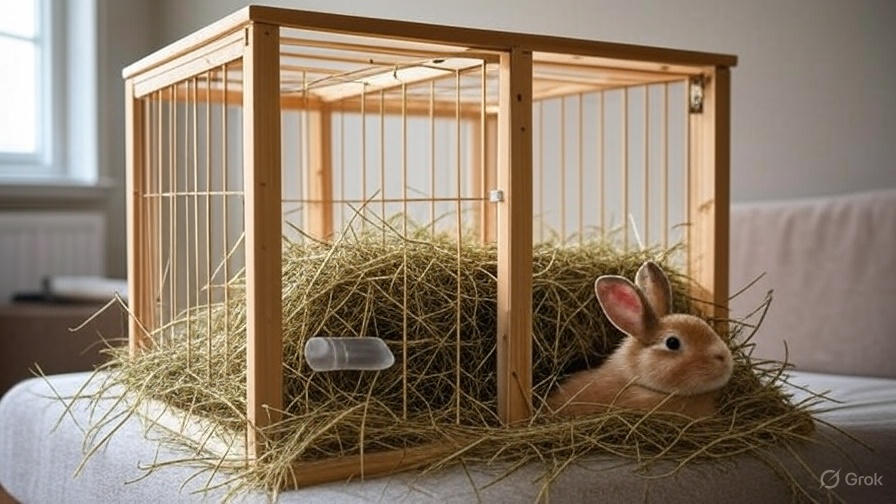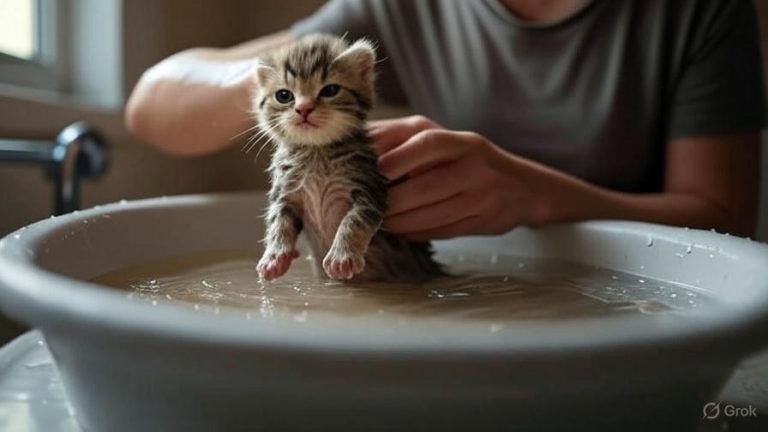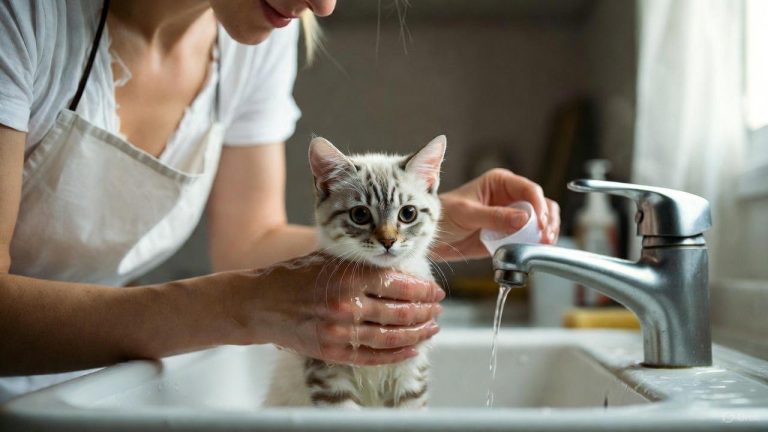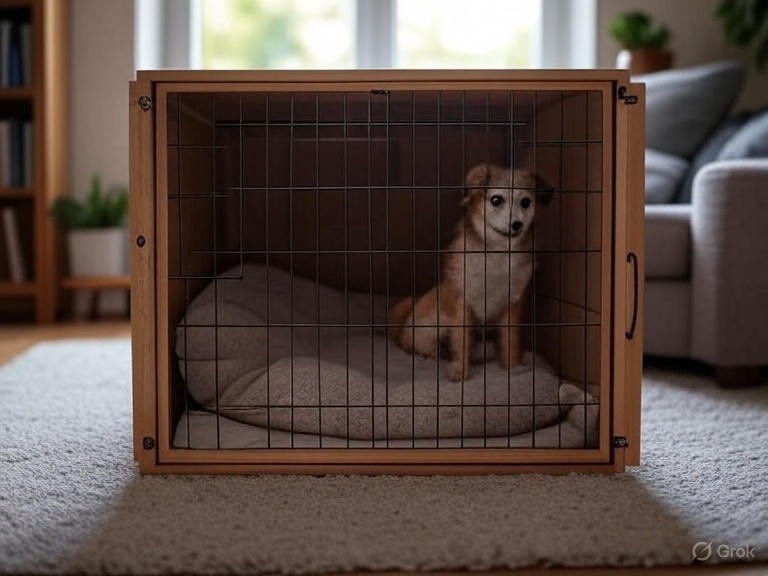How to Set Up a Cage for a Bunny?
Setting up a proper cage for your bunny requires careful planning and attention to detail. Rabbits need spacious, comfortable environments that support their natural behaviors and keep them healthy. This comprehensive guide walks you through every step of creating an ideal living space for your furry friend.
Size Requirements for Your Rabbit Cage
Your bunny’s cage must provide adequate space for hopping, stretching, and playing. The minimum cage dimensions should measure at least 4 feet long, 2 feet wide, and 2 feet high for medium-sized rabbits. Larger breeds need even more room, with dimensions reaching 6 feet in length.
Small rabbits weighing under 4 pounds can manage in slightly smaller spaces, but bigger always proves better. Your rabbit should easily stand on their hind legs without touching the cage top. They also need enough floor space to take at least three full hops in any direction.
Multi-level cages work wonderfully for maximizing space. Second stories provide extra room for exercise and exploration. However, ensure ramps connect different levels safely, with proper grip surfaces to prevent slipping.
Essential Cage Features and Construction
Wire cages offer excellent ventilation and visibility, making them popular choices among rabbit owners. Look for cages with narrow bar spacing, no more than 1 inch apart, to prevent escape attempts or limb injuries. Powder-coated wire resists chewing better than plain metal.
Solid bottom flooring protects your bunny’s feet from developing sore hocks. Wire-bottom cages cause discomfort and health problems over time. If your cage has wire flooring, cover it completely with solid boards, thick cardboard, or specialized cage mats.
Removable trays make cleaning much easier. Deep trays prevent litter and debris from scattering outside the cage. Plastic trays work well, but metal versions last longer and resist chewing damage.
Secure door latches keep your rabbit safely contained while allowing easy access for daily care. Double-latch systems provide extra security for escape-artist rabbits. Door openings should be large enough for you to reach all cage areas comfortably.
Location Matters: Where to Place Your Rabbit Cage
Room temperature affects your bunny’s comfort significantly. Rabbits thrive in temperatures between 60-70 degrees Fahrenheit. Avoid placing cages near heating vents, air conditioners, or drafty windows that create temperature fluctuations.
Natural light benefits rabbits, but direct sunlight can cause overheating. Position the cage where it receives indirect daylight without prolonged sun exposure. Artificial lighting works fine if natural light isn’t available.
Quiet areas reduce stress for sensitive rabbits. Heavy foot traffic, loud televisions, or noisy appliances can make your bunny anxious. However, complete isolation isn’t ideal either – rabbits enjoy observing household activities from a safe distance.
Ground-level placement allows easier interaction between you and your pet. Elevated cages work if you can comfortably reach inside for daily maintenance. Avoid basement locations where humidity levels might be too high.
Setting Up the Interior Living Space
Bedding materials create comfort and absorb moisture. Paper-based bedding proves safest for rabbits who might ingest small amounts. Avoid cedar or pine shavings, which contain aromatic oils that irritate respiratory systems. Aspen shavings make acceptable alternatives if paper bedding isn’t available.
Layer bedding 2-3 inches deep across the cage floor. This depth provides cushioning while absorbing urine effectively. Change bedding completely twice weekly, or more often if odors develop.
Hay serves dual purposes as both food and bedding. Timothy hay works best for adult rabbits, while alfalfa suits young or pregnant does. Spread hay generously throughout the cage, creating soft areas where your bunny can rest comfortably.
Litter Box Setup and Training
Litter boxes keep cages cleaner and make maintenance easier. Corner litter boxes maximize floor space while encouraging natural elimination behaviors. Rabbits typically prefer eliminating in corners anyway.
Paper-based litter absorbs odors without creating dust. Avoid clay or clumping cat litters, which can cause intestinal blockages if consumed. Wood pellets also work well and break down into sawdust when wet.
Fill litter boxes with 1-2 inches of litter material. Too much litter gets scattered outside the box, while too little fails to absorb properly. Top the litter with a handful of hay to encourage use.
Place litter boxes in corners where your rabbit naturally eliminates. Most rabbits develop bathroom preferences quickly. If accidents occur elsewhere, move the litter box to that spot instead of fighting natural tendencies.
Food and Water Station Setup
Heavy ceramic bowls prevent tipping and sliding around the cage. Stainless steel bowls work equally well and resist chewing damage. Avoid plastic bowls, which harbor bacteria and suffer chew damage easily.
Water bottles provide clean, consistent water access. Check bottles daily to ensure proper flow and refill as needed. Some rabbits prefer water bowls, which require more frequent cleaning but allow natural drinking postures.
Hay racks keep hay clean and accessible while reducing waste. Wall-mounted racks save floor space and prevent hay from getting soiled. Refill hay racks daily with fresh timothy hay.
Pellet feeders control portion sizes and reduce waste. Heavy ceramic crocks work better than lightweight plastic versions. Measure pellets according to your rabbit’s age and weight – adult rabbits need only 1/4 to 1/2 cup daily per 5 pounds of body weight.
Creating Comfort and Enrichment
Hiding places help rabbits feel secure in their environment. Cardboard boxes, wooden houses, or fabric tunnels all provide good hiding spots. Ensure any wooden items use rabbit-safe materials without toxic finishes.
Resting platforms give rabbits elevated spaces to survey their territory. Wooden platforms with carpet or towel covering provide comfortable lounging areas. Position platforms away from water sources to keep them dry.
Toys prevent boredom and encourage natural behaviors. Willow balls, apple wood sticks, and cardboard tubes make excellent chew toys. Rotate toys weekly to maintain interest and prevent destructive chewing of cage components.
Blankets or towels create cozy resting areas. Wash bedding materials regularly to maintain hygiene. Remove any items that become heavily soiled or damaged from chewing.

Ventilation and Air Quality
Proper airflow prevents ammonia buildup from urine. Wire cages naturally provide good ventilation, but solid-sided enclosures need additional air circulation. Small fans can improve airflow without creating drafts.
Humidity control matters in preventing respiratory issues. Basements or bathrooms might have excessive moisture that promotes bacterial growth. Use dehumidifiers if necessary to maintain healthy air quality.
Regular cleaning prevents odor accumulation. Spot-clean soiled areas daily and perform deep cleaning weekly. Good hygiene practices maintain air quality better than any ventilation system alone.
Safety Considerations
Cage inspection should happen weekly to identify potential hazards. Look for loose wires, sharp edges, or damaged components that could injure your rabbit. Repair or replace problematic parts immediately.
Escape prevention requires secure latches and proper bar spacing. Check door mechanisms regularly to ensure they function properly. Inspect wire spacing to confirm your rabbit can’t squeeze through openings.
Electrical cords near cages present serious dangers. Rabbits instinctively chew cords, risking electrocution. Use cord protectors or position cages away from electrical hazards entirely.
Toxic materials must stay away from rabbit areas. Many household items, including certain woods, plastics, and metals, can harm rabbits if chewed. Research material safety before introducing new cage accessories.
Daily Maintenance Routines
Morning checks should include water bottle inspection, food bowl refilling, and litter box spot-cleaning. Quick daily maintenance prevents small problems from becoming major issues.
Evening routines involve hay replenishment, pellet feeding, and general cage tidiness. Consistent timing helps establish routines that reduce rabbit stress.
Weekly deep cleaning includes complete bedding changes, thorough litter box washing, and cage disinfection. Use rabbit-safe cleaning products to avoid chemical exposure.
Transitioning Your Rabbit to Their New Home
New environment adjustment takes time and patience. Allow your rabbit several days to explore and become comfortable with their cage setup. Avoid making major changes during this adjustment period.
Gradual introductions work best for new accessories. Add one new item at a time, allowing your rabbit to investigate and accept each addition before introducing more.
Monitor behavior changes during the transition period. Decreased appetite, excessive hiding, or unusual aggression might indicate stress. Give your rabbit time to adjust, but consult a veterinarian if concerning behaviors persist.
Common Setup Mistakes to Avoid
Cage size miscalculations lead to cramped, unhappy rabbits. Err on the side of larger rather than smaller when determining appropriate dimensions. Your rabbit’s quality of life depends on adequate space.
Wrong bedding choices can cause health problems. Stick to paper-based products or aspen shavings. Cedar and pine shavings might smell pleasant to humans but irritate rabbit respiratory systems.
Inadequate cleaning schedules result in unsanitary conditions. Establish consistent maintenance routines from day one. Regular cleaning prevents health issues and keeps your rabbit comfortable.
Poor cage placement creates environmental stress. Avoid temperature extremes, excessive noise, and isolated locations. Find the right balance between family interaction and peaceful rest areas.
Special Considerations for Different Rabbit Breeds
Large breeds like Flemish Giants need proportionally bigger cages with stronger construction. Their size and weight require sturdy flooring and reinforced cage components.
Dwarf breeds might seem like they need less space, but they’re often more active than larger rabbits. Provide adequate room for exercise and play regardless of your rabbit’s size.
Long-haired breeds need extra grooming space and tools. Include brushes and grooming supplies in their cage area, along with additional hiding spots to retreat during grooming sessions.
Elderly rabbits benefit from lower platforms and easier access to food and water. Arthritis and mobility issues require thoughtful cage modifications for senior rabbit comfort.
Conclusion: Creating Your Rabbit’s Perfect Home
Setting up a proper rabbit cage involves many considerations, from size and location to interior furnishings and safety features. Take time to plan carefully and invest in quality materials that will last for years. Your rabbit’s health, happiness, and quality of life depend on the environment you create.
Remember that cage setup is just the beginning – ongoing maintenance and adjustments ensure your rabbit continues thriving in their home. Pay attention to your pet’s preferences and behaviors, making modifications as needed to keep them comfortable and content.
With proper planning and attention to detail, you can create a rabbit cage that serves as a safe, comfortable haven for your furry companion. The effort you put into initial setup pays dividends in years of rabbit health and happiness.







